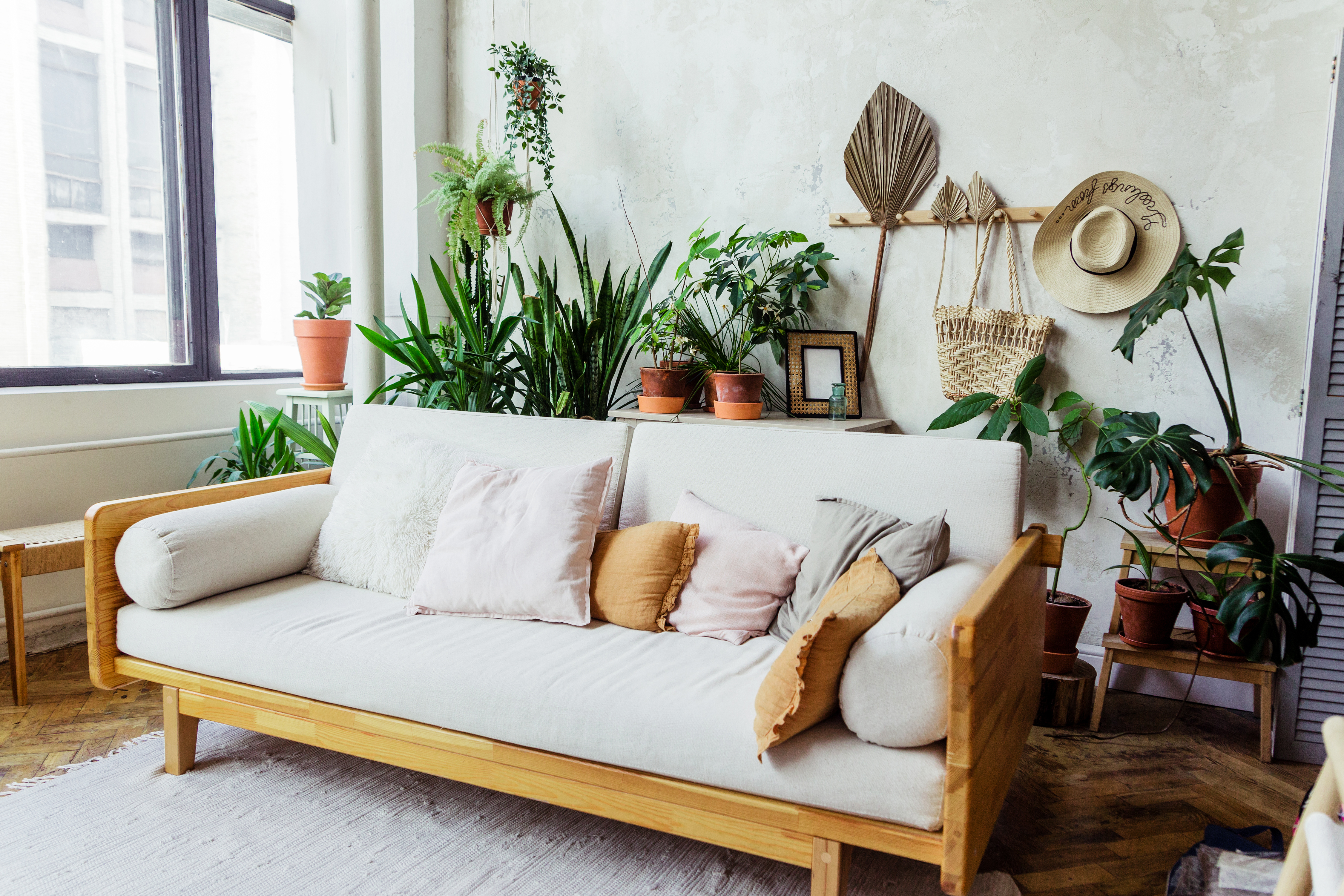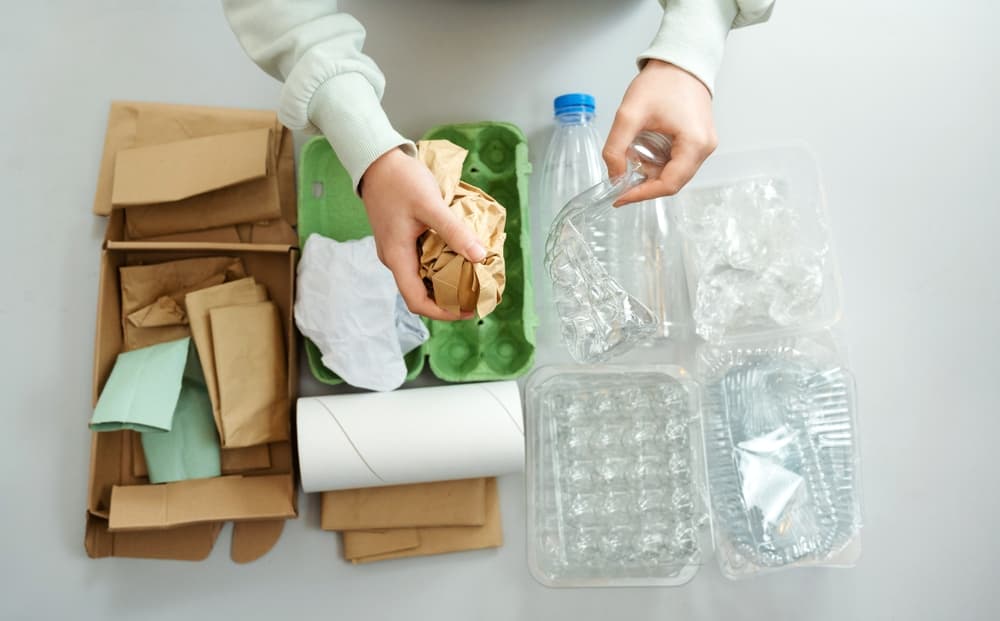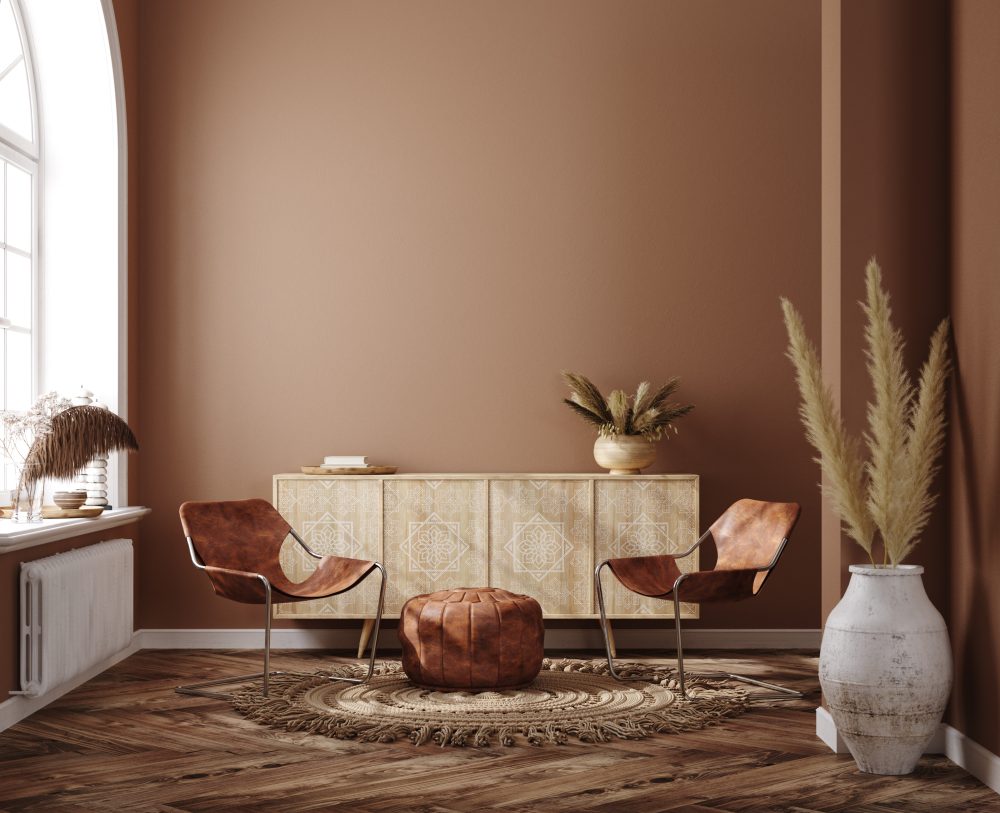Sustainability is a key design trend – it is all about reducing your environmental impact, cutting waste, and promoting a greener future. All while making your home look good too. Here is what you need to consider:
Energy Efficiency
Heating and lighting are big waste culprits, so if you are designing a new space, these are key areas to focus on.
Go for lighter decor and mirrors to reflect light around your room. Also consider blinds as these open up the window space, letting in more daylight than you normally get with curtains. These simple ideas will help to maximise natural light in your room, thus decreasing the amount of artifical light that you will need to use.
Your flooring choice can also make a big impact on energy consumption – carpets are great insulators, retaining heat which further cuts energy usage!
Another bright idea is to use smart gadgets; heating which can be turned on precisely when needed and bulbs which sense when a room is empty (automatically switching off when no one is there) all contribute to a more efficient home.

Organic Materials & Natural fibres
Using natural materials like wood and stone have multiple benefits. They look sleek and cool, fitting in with many of the latest design trends – like Japandi. Plus, they are less processed which means it uses less energy and toxic waste.
Always looks for eco-friendly labels though – like FSC on wood products. This will ensure that the wood came from a sustainable source. Bamboo is also a great choice as it a fast-growing material, making it a quickly renewable product.
Natural fibres also make the best choice for furnishings like rugs and blankets too. Again, look out for the right acreditation to show that they are ethically sourced and comply with regulations (OEKO-Tex certified is the main one to look out for with textiles). As a genral rule, avoid synthetic materials/VOC’s (volatile organic compounds) which have a damaging environmental impact.
Keep it local
Always shop local, and go for locally crafted items wherever possible to minimise any additional emissions from long distance travel.
Check out local facebook groups, Etsy or go to your local high street/market to see what items are made nearby.
If you do need to shop futher afield, resarch furniture brands that have eco-friendly policies. Do they use reclaimed wood? Have a low emissions policy? Wherever possible, opt for sturdy pieces which will last you a while and do not need to be frequently replaced.
Re-use and upcycle
This is a major way to stop items going to landfill! Old fashioned or out-of-date items can be revamped and upcycled to be given a new lease of life. Even broken items can be repaired, meaning waste is reduced.
Scour your local charity shops and Freecycle websites to find items you can re-use and upcycle.
Also, think about items you have around the house. If you have furniture you can re-purpose for a new room – go for that option instead of buying something new. If you find items that you don’t currently use, but aso don’t want to pass on – then use a storage unit. That way you can keep items safe and secure – and out of the house – until you need it again.

Houseplants
Plants bring a natural beauty to your home, along with a sense of calm. They also help to filter out harmful chemicals form the air. Not sure which to go for? The best air purifying plants include Ivy, Snake Plants, Spider Plants and Kentia Palms!
Train your plants to run along your walls with special hooks to bring the ‘outside in’; this will make a lovely design statement while cleansing your home at the same time. Or group your plants together to make a mini jungle statement in your lounge!

Here at Shurgard we are committed to protecting the environment and we encourage our customers to do the same. What other sustainable home trends do you stick to?




Leave a Reply